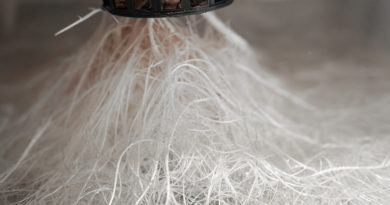Backyard and Balcony Gardening for Butterflies
Our gardens are constantly evolving, a luxury that allows us to roll with the punches and expand when we want to or remove what we don’t love. It means we can also adapt and tweak our gardens to better withstand a changing climate or help a struggling species. A recent study finds we need to be gardening for butterflies, and anyone with a backyard, patio, or windowsill can do it.
Study Finds Decline in Butterfly Populations
Published in Science, the study’s findings brought some researchers to tears. After compiling data and butterfly sightings over the last two decades, the U.S. Geological Survey has discovered that populations have declined by 22%. Experts predict the same trend is happening north of the border in Canada, too.
The findings are upsetting for many reasons. Butterfly caterpillars help with nutrient cycling in the garden and are food sources for baby birds. As butterflies, they pollinate flowering plants. Scientists blame the population decline on climate change, pesticide use, and habitat loss.
Depressing? Absolutely. But the really good news is that it’s not too late to help the butterflies. Populations can grow quickly because most species produce one to three new generations yearly!
How To Restore Butterfly Habitats
We need to work on restoring butterfly habitats, and anyone with a garden, no matter how big or small, can help with that. First, drop all the pesticides. There’s no room for these harmful chemicals in the home garden.
Next, plant your garden with selections that host butterfly caterpillars or offer nectar to butterflies. You can do this in the yard or plant containers for your balcony or windowsill garden. No space is too small to make a big impact.
Choose sunny, open areas for your garden and select plants that will bloom at different times during the season so there’s a constant food supply. Having three species in bloom simultaneously is always a good idea if you have room.
Give plants enough space to grow to their mature width, but plant them close enough to avoid large gaps in the garden once they reach their full size.


Plants to Avoid in the Garden
- Non-native or ‘alien’ plants: These may be invasive species or unable to withstand the local climate.
- Butterfly bush: The name is deceiving! This shrub is from Asia and doesn’t serve as a larval host plant for any North American butterfly. It delivers nectar but is also a prolific re-seeder and can quickly take over the garden.
- Double flowers: They’re pretty and tempting to put in the garden, but plants with double flowers are typically low in pollen (or have nothing at all!). That’s because the extra petals cover the plant’s reproductive parts.
- Wind-pollinated plants: These are good larval hosts, but pollinators won’t have much food if your garden contains mostly wind-pollinated plants.
Milkweed and Butterflies
Milkweed is essential to the survival of monarch butterflies. Typically found growing in ditches or rural areas, milkweed is food for caterpillars and where you’ll likely find monarchs hatching. Did you know you can grow milkweed in a pot? You’ll need a well-draining, large-size container (about 14-16″ per plant). In the ground, milkweed tolerates poor, sandy soils. But in a pot, the soil should be right with organic matter. Place the pot in full sun and water regularly.
Butterfly-Friendly Plants for the Garden
Butterflies love bright colors, usually red, orange, yellow, or purple. They also like flowers that have a landing pad. Here are a few examples of plants butterflies love:
- Coneflowers
- Ceanothus, New Jersey tea
- Prairie Clovers
- Joe Pye weeds
- Sunflowers
- Blazing stars
- Cherry and plum trees
- Goldenrod
- Asters
- Ironweeds
- Blue mistflower
The Pollinator Victory Garden: Win the War on Pollinator Decline with Ecological Gardening by Kim Eierman is an excellent read with plenty of information on gardening for all pollinators.




